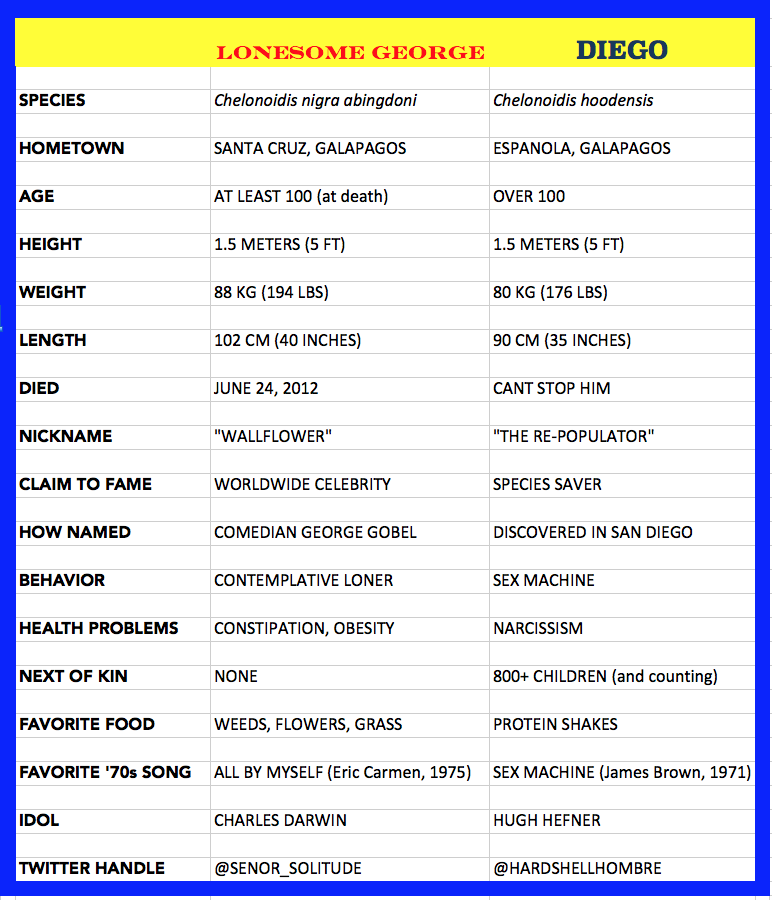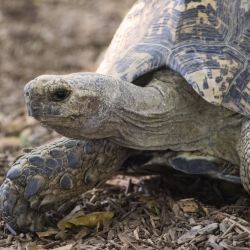In light of the discouraging stories we're continually faced with about the imperiled environment, or the threats to nature and our planet, it was certainly uplifting to hear recently about the successes of one giant tortoise happily prospering in the Galapagos Islands.
Often times, news stories originating from this Pacific Ocean archipelago off the coast of Ecuador focus on animal preservation efforts that have fallen short, fragile habitats spoiled by humankind and endangered species of one form or another. But this week, it was about a slow-moving, four-legged centenarian known as Diego, who unlike his famous yet late counterpart (see chart below) has been credited with single-handedly bringing his subspecies back from the brink of extinction.
Now, that's not easily done and celebrity like that is quite a resumé builder, so the main question was whether Diego was deserving of all the hype. And the answer to that is a resounding yes, given that he's been credited by his caretakers of fathering more than 800 offspring since being brought back to the island of Espanola in 1976. In the mid-1960's, of his subspecies, Chelonoidis hoodensis, only two males and 12 females existed, and reproduction between them was considered unlikely. But enter Diego, who got busy, and what a savior he's become.
"He's a very sexually active male reproducer. He's contributed enormously to repopulating the island," according to tortoise preservation specialist Washington Tapia, who had watched as roughly 2,000 tortoises have been given access to Galapagos National Park. Speaking to AFP, he added that "We did a genetic study and we discovered that he was the father of nearly 40 percent of the offspring released into the wild on Espanola."
Now while that's quite a story, it's remarkable in another way altogether.
Preservationists have been down this road before, hanging their hopes on another tortoise known to the world as Lonesome George. When identified in 1972 as one of the few remaining members of Chelonoidis nigra abingdoni, he was similarly tasked with nothing short of saving his subspecies. But he wasn't eventually dubbed Lonesome George for nothing.
The 194-pounder proved—completely—to be a disinterested lover. During his last 40 years "he showed no interest in breeding," Scientific American reported when Lonesome George died in 2012. "Even attempts to extract his sperm came to naught. George did finally mate a couple of times but the resulting eggs—laid in 2008 and 2009—were infertile and did not hatch."
Now, there are many similarities between Lonesome George and Diego. At 100, they were nearly identical in age (best guesses having to suffice). George spent 40 years on Santa Cruz Island, while Diego has been on Espanola now for ... 40 years. And checking their BMI, they were roughly the same size. But when it came down to the libido (or whatever the tortoise equivalent is), George and Diego couldn't have been more different.
All of this got us to thinking, how did these two legends compare? Which led us to the table below, as to how these heavyweights stack up in a head-to head matchup:
TALE OF THE TORTOISE TAPE


